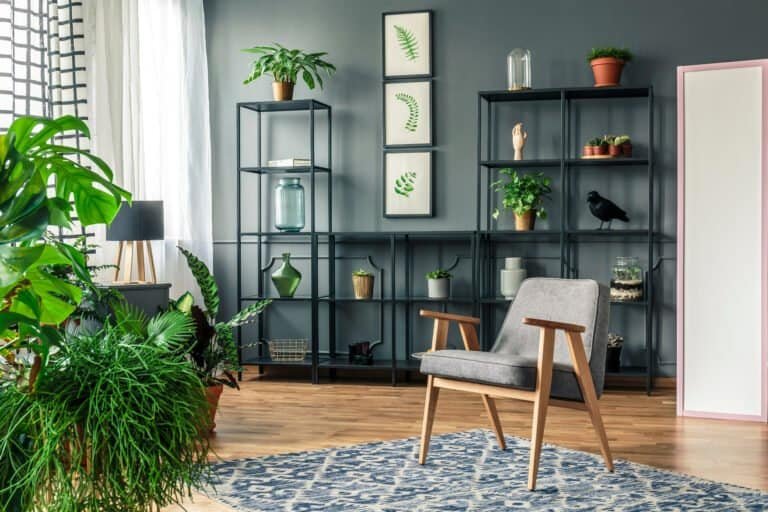Affordable Custom Picture Framing: Create a High-End Gallery Look on a Budget
Creating a beautiful gallery wall doesn’t have to be costly. With a few clever techniques, you can achieve that polished, professional look without the hefty price tag.
You can create a high-end gallery look by using standard-size frames with custom-cut mats, painting inexpensive frames, or selecting gallery frames with oversized mats to make small art appear more substantial. These budget-friendly approaches give artwork the proper showcase it deserves while maintaining a cohesive, curated appearance.
Understanding the Basics of Picture Framing
Picture framing combines technical elements and design principles to protect artwork while enhancing its visual appeal. The right combination of frame, glass, and matting can transform even modest pieces into stunning displays.
Types of Frames and Materials
Frame materials significantly impact both appearance and preservation quality:
- Wooden frames remain the most popular choice, offering versatility in styles from ornate traditional to sleek modern designs. Common woods include pine (budget-friendly), oak (durable), and maple (refined grain patterns).
- Metal frames provide a contemporary look and are typically more affordable than high-end wood options. Aluminum frames are lightweight and available in various finishes.
- Plastic and composite frames offer budget-friendly alternatives but may lack longevity.
When selecting a frame, consider the artwork’s style, your room’s existing décor, the level of protection needed, and your budget constraints.
Glass vs. Acrylic: Pros and Cons
Glass has been the traditional covering choice:
- Pros: Better clarity, scratch-resistant, affordable
- Cons: Heavy, breakable, limited UV protection (unless upgraded)
Acrylic (plexiglass) alternatives provide several advantages:
- Pros: Lightweight, shatter-resistant, available with UV protection
- Cons: Scratches more easily, attracts dust, typically more expensive
For valuable artwork or pieces in sunny locations, UV-protective coverings are worth the investment.
Matting: Enhancing Visual Appeal
Matting creates breathing space between artwork and glass while adding visual impact. Standard mats are typically cut from acid-free paper board.
Color selection dramatically impacts presentation. Neutral tones like white, off-white, and black remain popular choices for most artwork.
Double or triple matting adds sophistication through layering. This technique uses multiple mats with the bottom mat(s) extending just 1/4″ beyond the top mat, creating a subtle border effect.
Designing Your Picture Frame Aesthetics
The frame you select can dramatically enhance your artwork’s appearance and help it blend with your decor.
Selecting the Right Frame Style for Your Art
Good frame styles should complement your artwork rather than compete with it:
- For delicate watercolors or sketches, consider thin, simple frames
- Ornate frames often pair well with traditional oil paintings or vintage prints
- Modern and minimalist art typically looks best in clean-lined frames
- For photography, thin black or white frames create a gallery-like presentation
Color Theory in Frame Selection
Frame colors can either contrast with or complement your artwork:
- Complementary frames pick up a minor color from within the artwork, creating harmony
- Contrasting frames create visual separation and can make artwork pop
- For colorful pieces, neutral frames in black, white, or natural wood prevent visual competition
- White or off-white mats work universally but colored mats should be chosen carefully
Balancing Frame Size with Art Dimensions
Proportional framing creates visual harmony:
- Small artworks generally benefit from mats that increase the overall presentation size
- For large pieces, ensure frame thickness is proportional
- Standard mats range from 2-4 inches
- Allow 1-2 inches between the artwork and frame edge for breathing room
- For gallery walls, maintain consistent spacing between frames (typically 2-3 inches)
Budget-Friendly Framing Options
Creating a beautiful gallery wall doesn’t have to be expensive. Several cost-effective approaches can help you achieve a polished look while keeping expenses manageable.
DIY Framing Techniques
DIY framing offers significant savings compared to professional services:
- The “DHY” (Do Half Yourself) method involves ordering custom-built frames online and handling the assembly at home, saving 40-60%
- Basic tools needed include measuring tape, level, screwdriver, picture hanging hardware, and cleaning cloth
- Pre-cut mats can be purchased at craft stores
- For standard-sized artwork, use pre-made frames from retailers like IKEA, Target, or Amazon
- Float mounting creates visual depth by attaching artwork to a backing board with a visible border
Where to Find Affordable Framing Supplies
Budget-conscious framers should explore multiple sources:
- Craft stores like Michaels, Hobby Lobby, and JoAnn frequently offer 40-50% off frame sales
- Thrift stores and secondhand shops often have quality frames at fractional costs
- Online retailers like Frame It Easy, American Frame, and Framebridge offer affordable options
- Wholesale suppliers cater to bulk purchases, ideal for gallery walls or large projects
Repurposing and Upcycling Frame Ideas
Upcycling transforms outdated or damaged pieces:
- Old wooden frames can be sanded and repainted in modern colors
- Create a cohesive look by painting mismatched frames in a uniform color
- Creative alternatives include clipboard displays, binder clips with hanging wire, or wood trim assembled into custom-sized frames
- Decorative washi tape creates instant borders for posters or prints without requiring a frame
Step-by-Step Guide to Assembling Your Frame
Creating a professional-looking frame requires precision and attention to detail.
Measuring and Cutting
Begin by measuring your artwork precisely. Add twice the mat width plus an extra 1/8 inch for movement to determine your frame’s inner dimensions.
Essential tools for cutting:
- Miter saw or miter box with hand saw
- Measuring tape
- Carpenter’s square
- Fine-grit sandpaper
Mounting the Artwork Securely
Position your artwork on an acid-free mat board to prevent discoloration. Secure the artwork using archival mounting corners rather than adhesives when possible.
Place clean glass or acrylic over your mounted artwork. For a professional touch, add a spacer between the glass and artwork.
Applying and Sealing the Backing
Cut acid-free backing board to match your frame’s inner dimensions. Secure it to the frame using framing points, offset clips, or glazier points.
Seal the back with acid-free framing tape and add appropriate hanging hardware.
Customization Tricks for a Premium Look
Small details and customization choices can transform a simple framing project into a professional-looking piece.
Adding Decorative Elements
- Fillets are thin wooden strips that sit inside a frame, creating depth and visual interest
- Liners create a step-like transition between frame and artwork
- Textured mattes add sophistication (suede, linen, and silk-textured mat boards)
- Double matting uses two different colored mats with the bottom one creating a thin border
- Non-traditional materials like fabric-wrapped mat boards, painted frames with metal leaf accents, or natural elements add unique touches
Hanging and Displaying Your Framed Art
Properly hanging and displaying your framed art transforms your space and showcases your pieces effectively.
Best Practices for Wall Hanging
- Use appropriate hardware based on weight (picture hooks for lightweight, wall anchors for medium, toggle bolts for heavy pieces)
- Hang at eye level (center at 57-60 inches from the floor)
- Use a level for straight installation
- Allow 2-3 inches of space between frames when hanging multiple pieces
Lighting Considerations
- Track lighting offers flexibility to adjust direction and intensity
- Picture lights provide dedicated illumination for statement pieces
- Avoid direct sunlight to prevent fading
- Aim for 2-3 times the ambient room lighting for emphasis
Arranging Multiple Pieces in a Gallery Wall
Popular layout styles:
- Grid layout: Uniform frames in perfect alignment
- Salon style: Organic arrangement with varied sizes and shapes
- Horizontal line: Single row arrangement at eye level
- Center-focused: Arrangement around a larger anchor piece
Maintenance and Care
Proper care extends the life of your framed artwork and preserves its appearance.
Cleaning and Protection
- Dust frames weekly using a soft microfiber cloth
- Clean glass with ammonia-free cleaner applied to the cloth, not directly on glass
- Position artwork away from direct sunlight, heat sources, and humidity fluctuations
- Maintain consistent humidity levels between 40-55%
- Inspect frames regularly for damage or loosening hardware
Final Thoughts
Custom framing allows you to reflect your unique style and taste. Don’t be afraid to experiment with frame colors, textures, and finishes that complement both your artwork and living space.
Remember that framing isn’t an afterthought—it completes the artwork. The right frame enhances colors, draws attention to key elements, and creates harmony between the piece and its surroundings.








